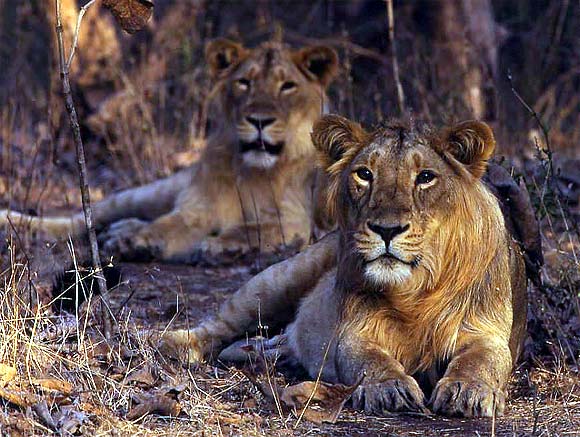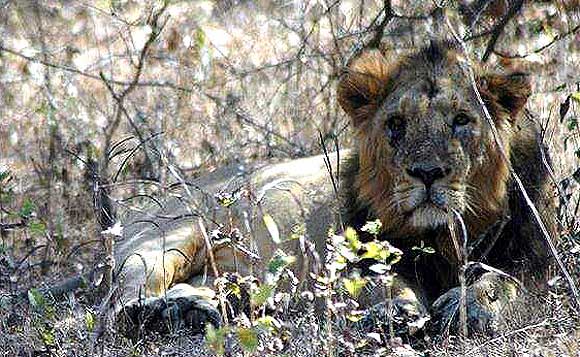
Why is the death toll among lions increasing in Gir National Park? Haresh Pandya finds out
In an ironical situation, the population of lions in Gujarat's Gir National Park has steadily increased in recent years but there has also been an alarming rise in their death toll.
In fact, 42 lions, 43 lionesses and 54 cubs have died in the last three years, according to Environment and Forest Minister Mangubhai Patel.
Patel made the revelation in the state assembly, while giving a written reply to a question raised by Congress legislator Bavkubhai Undhad.
Patel specified that 42 lions died in 2009, 48 in 2010 and 49 in 2011, adding that they were all accidental deaths. Patel did not clarify how many lions or lionesses have died of natural causes in these three years.
Click on NEXT for more...

He emphasised that while the death toll of adult lions remained between 27 and 31, the toll among cubs has been rising every year. As per government figures, 15 lion cubs died in 2009, 17 in 2010 and 22 in 2011.
Gir National Park, spread across a 1,400 sq km area and strategically located on the Saurashtra peninsula of Gujarat, is the only habitat of rare Asiatic lions. Despite a couple of heinous poaching incidents in the recent past, as many as 411 lions were sighted in Gir when the last census was conducted in 2010, 52 more than those counted in the 2005 census.
Apart from random incidents of poaching, a number of open wells in and around Gir act like death traps for these royal animals. These wells are also dangerous for the 100-odd leopards in the Gir National Park.
Click on NEXT for more...

Every year, the ferocious beasts end up killing each other while fighting for territory or in self-defence.
There have also been occasional cases of electrocution of lions by farmers and settlers living inside and on the periphery of Gir, to protect their livestock from possible attacks.
According to wildlife experts, a lion requires nearly 25 sq km of grassland to roam freely and comfortably. The density of Gir makes life uncomfortable for its famous inhabitants. The land allotted to them in Gir National Park is not enough so they keep straying beyond the parks' limits to search for prey.
While sometimes they attack domesticated animals in villages on the outskirts of Gir, of late, incidents of lions attacking humans have also increased.
Click on NEXT for more...